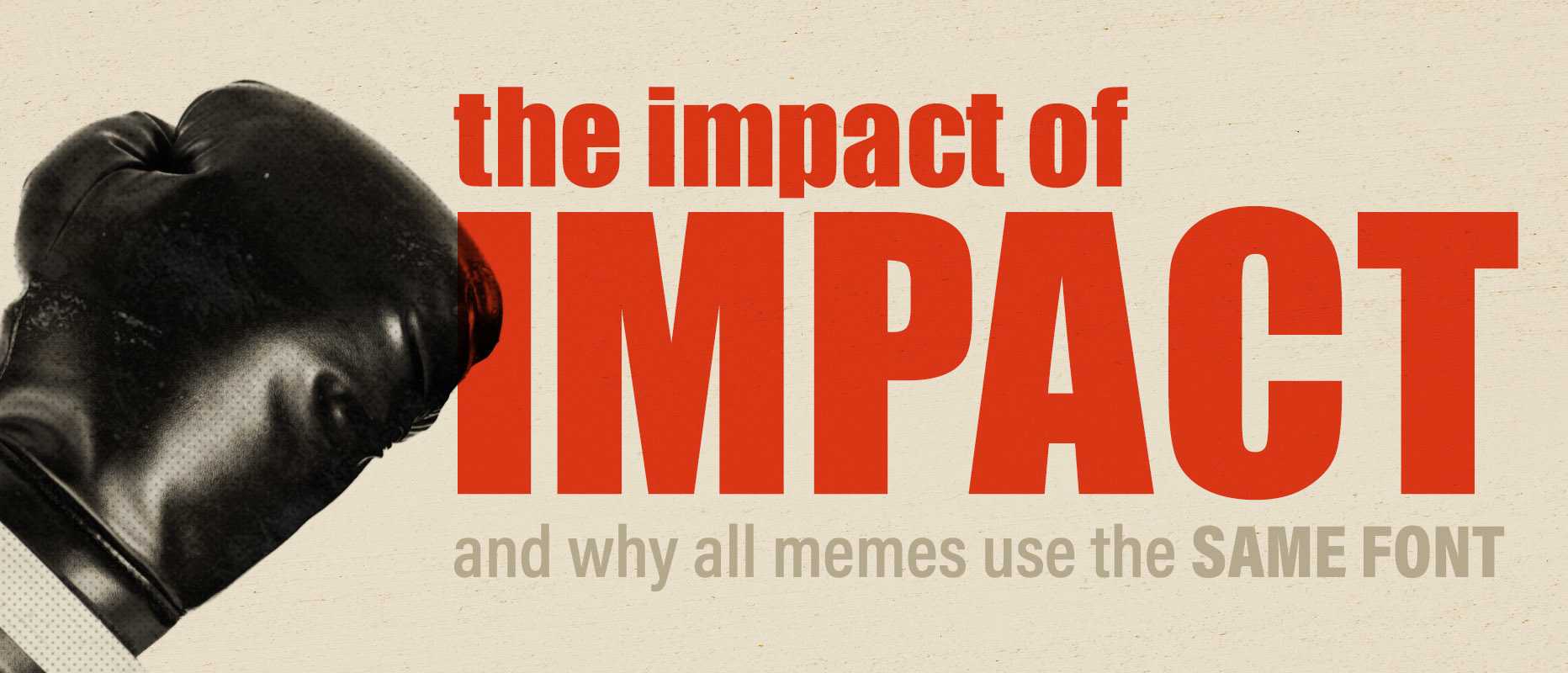Why do memes all use the same font?
For years social media has exploded with Internet memes – sometimes witty, sometimes silly, sometimes thought provoking – but all having the same recognizable look. What tends to tie them all together is the use of a similar font; Big, bold and white with a black stroke.
This is Impact. This font gives every meme its “meme-like” appearance. We KNOW it when we see it. Regardless of the image used, that font tells us right away that what we’re looking at is a meme.
So how did the font Impact come to be the meme font to end all meme fonts?
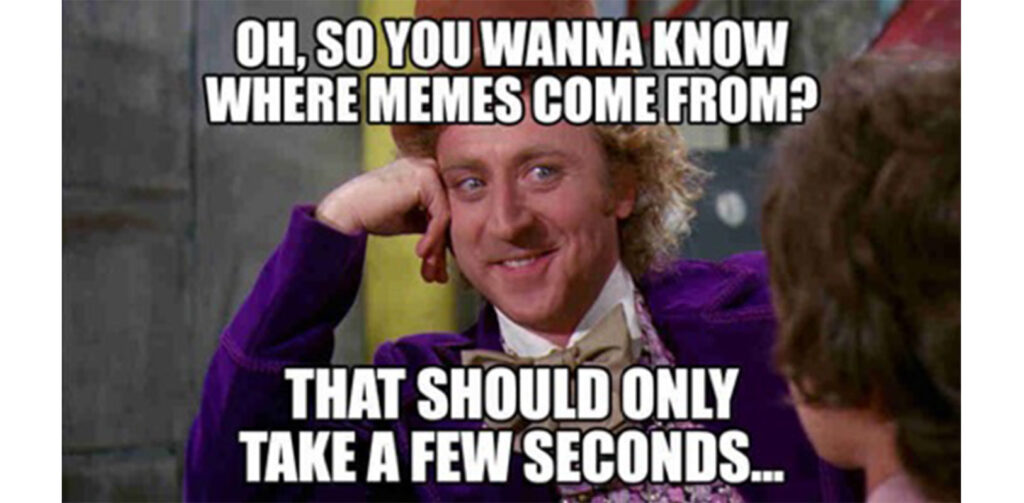
A Huge “Impact”
During the 1960s there was a trend towards condensed, bold, “industrial” fonts. In 1965, designer Geoffrey Lee originally released the Impact typeface. Lee wanted this typeface to “have an impact”; it was a bold, highly visible san-serif display font with compressed letterspacing that was easy to read and easily fit into the typography trends of the time.
He sold the font to type foundry Stephenson Blake who went on to use Impact on their marketing materials, valuing its legibility, especially on top of photos.
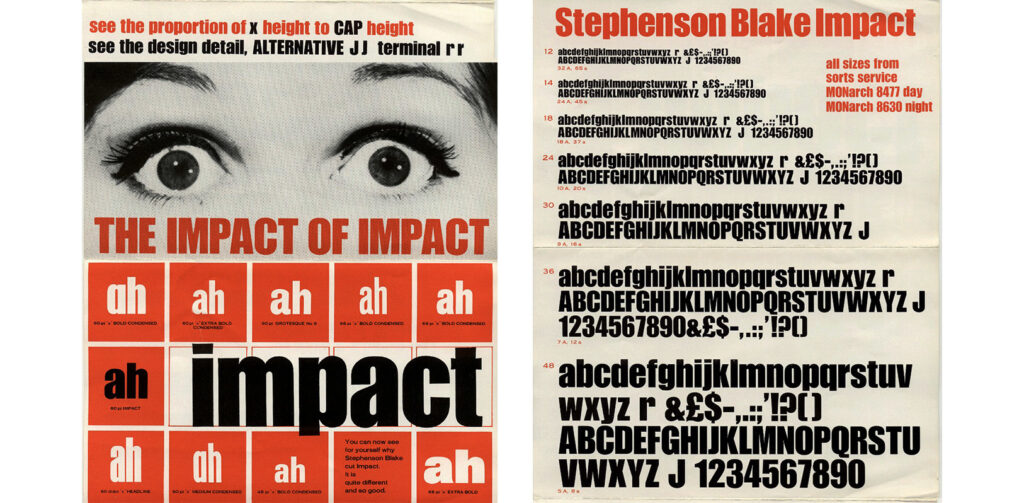
But it would take more than legibility for Impact to take over the Internet.
When Stephenson Blake disbanded its type foundry operations it sold the digital rights of its typefaces. Impact was sold to Monotype, a type foundry competitor who, in turn, licensed their fonts to Microsoft.
In 1996 Microsoft attempted to create a standard font pack that would work across the then budding World Wide Web. Impact was one of a small group of fonts included in what is known as the “core fonts for the web” (as well as the Windows 98 operating system, which had close to 90% of the market at the time) and now existed on millions of personal computers as a standard Internet and Microsoft font.
I Can Has Cheezburger?
So it wasn’t a surprise that this clearly legible, strikingly bold font that was easily accessible on most computers and also web-friendly became the font of choice in early 2007 when “I Can Has Cheezburger” cat first appeared on the comedy website Something Awful. The image macros features a picture of a British shorthair cat with the caption of the animal asking “I can has cheezburger?” in the large, bold, Impact font that appears on top of the photo.
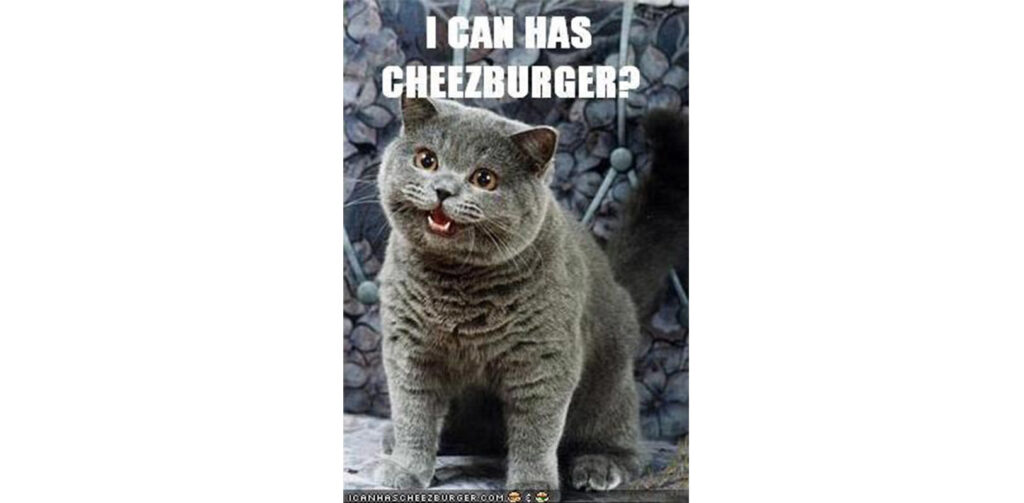
From this image’s popularity the I Can Has Cheezburger (ICHC) blog-format website was born. ICHC was instrumental in bringing image macros and lolspeak into mainstream usage and popularizing (and monetizing) the Internet meme culture. Impact became the default font for the LOL Builder, ICHC’s Internet meme creation tool where anyone could create his or her own image macros online, followed closely by other meme template builders like Imgflip.com and Memegenerator.net. From then on people have continued using Impact as the standard font for memes.

The use of Impact is now so ingrained in our Internet culture that it’s become a meme of itself – we point it out online when a meme we see doesn’t have the classic “I Can Has Cheezburger” look and cringe at the sight of any other font on top of an image. This font “shouts” at us in ways other fonts can’t do, it’s loudness and boldness contrasting its corresponding photo in a way that evokes comedy. And even though we now have hundreds of more fonts to choose from Impact doesn’t seem to be going anywhere. We expect memes to look a certain way and that way heavily involves the font…that bold, clearly legible, hugely impactful font.
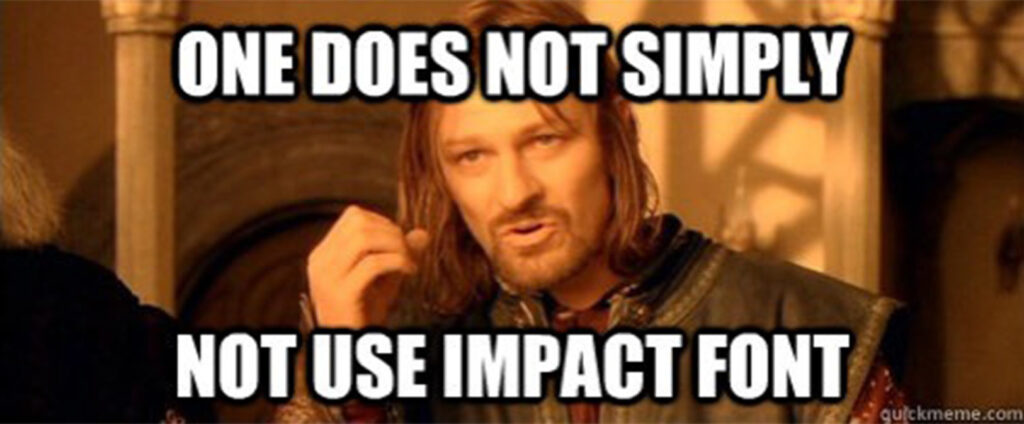
RESOURCES:
https://www.howtogeek.com/217257/ask-htg-whats-the-font-meme-pictures-use-and-how-can-i-make-them/
https://www.vox.com/2015/7/26/9036993/meme-font-impact
https://en.wikipedia.org/wiki/I_Can_Has_Cheezburger%3F
https://en.wikipedia.org/wiki/Impact_(typeface)
https://en.wikipedia.org/wiki/Core_fonts_for_the_Web
https://www.cnn.com/2013/06/25/tech/social-media/image-macros-memes-impact-font/index.html
https://fontsinuse.com/uses/25213/the-impact-of-impact-typeface-advert-brochure

